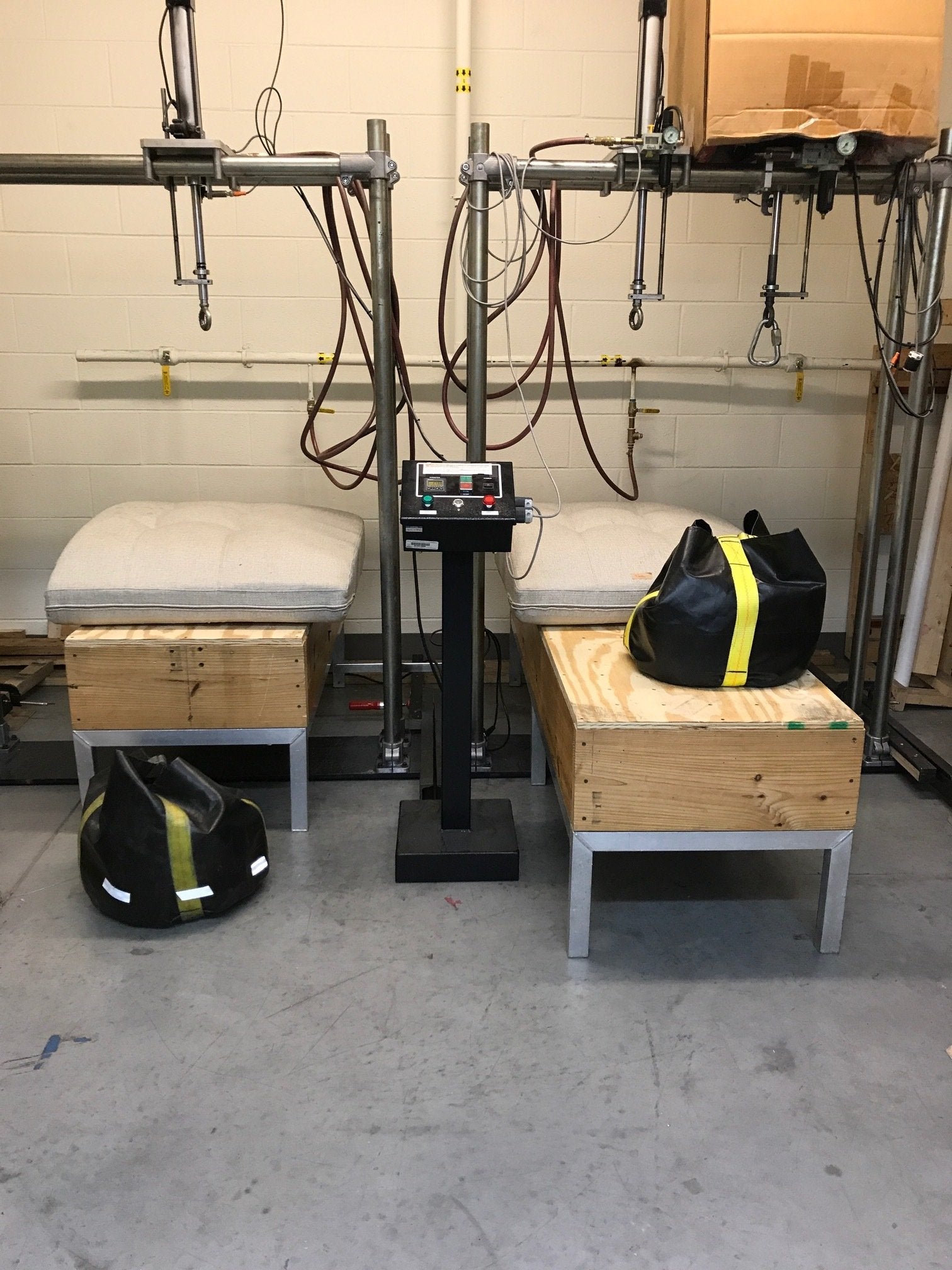
Quality Testing
Quality testing is a huge part of our overall manufacturing and service process at STI. It is important that our customers can rely on us for fabrics that have a long life-cycle and live up to our high standards of quality and durability. There are many different tests that our fabrics go through before they ever leave our shipping dock.
At STI, we have our own testing lab where we can test our fabrics. Below are a few of the tests we perform in-house:
Seam Slippage: This test method is used to determine the resistance to slippage of filling yarns over warp yarns , or warp yarns over filling yarns, using a standard seam.
Tensile Strength: Tensile strength typically refers to the strength and elongation properties of the material. Most textile fabric tensile testing is performed as either a grab test, to eliminate edge effects, or a strip test, including edge effects. For a grab test, the grips of a testing machine clamp a fabric sample in the center using jaws smaller than the sample width. For a strip test, the grips clamp a strip of fabric using jaws wider than the sample width.
Tearing Strength: Tear strength is the resistance of the fabric against tearing or force required to propagate the tear once it is initiated. High tear strength of textiles make sure that the punctures in the fabrics doesn't propagates easily.
Wyzenbeek Abrasion: A Wyzenbeek machine is used for this test. Individual test specimens cut from the warp and weft direction are then rubbed back and forth using an approved fabric as the abradant. The number of double rub cycles achieved before two yarn breaks occur or noticeable wear is observed is recorded as the fabric’s abrasion rating.
Dynamic Seam Fatigue: Dynamic Seam Fatigue Tester, to determine the strength of upholstery seam constructions covering a standard foam composite cushion by imposing a cyclic, impact and penetrating load.
Martindale Pilling: The Martindale pilling test is an international standard and widely accepted throughout the world as a reliable means of determining a fabric’s ability to withstand pilling. Fabric samples are mounted flat and rubbed in a figure eight like motion using a piece of worsted wool cloth as the abradant. The number of cycles that the fabric can endure before fabric shows objectionable change in appearance (yarn breaks, piling, and holes) is counted. Number of cycles determines pilling rating.
If we do not have the equipment to perform certain tests, we will have the tests performed at and outside lab. One of the main labs we use is Manufacturing Solutions Center (MSC) located in Conover, North Carolina. We have had the MSC test our fabrics for California TB117-2013 (flammability test), fiber migration, seating durability testing, and many other tests that we are unable to perform. We will also use the people at the MSC as a source to contact if we have any questions regarding new test methods.
California TB-117-2013: TB 117-2013 is a flammability standard for upholstered furniture. TB 117-2013 mandates that all filling materials, including flexible polyurethane foam (FPF), that can reasonably be expected to be used in or as an article of furniture, or as a mattress pad without a covering, must meet the smolder-resistant requirements of the TB 117-2013 Resilient Filling Material Test.
Seating Durability: (see video below!) This test method drops a bag with a weight of 125 pounds on the cushion for 100,000 cycles.
The Manufacturing Solutions Center is a non-profit organization located in Conover, NC and is a division of Catawba Valley Community College. Their mission is to improve, develop and create. Manufacturing Solutions is a multi-faceted center offering several different services centered around testing, engineering and training.
The test in the video above is the BIFMA X 5.4-2012 Seating Durability Test. This test method drops a bag with a weight of 125 pounds on the cushion for 100,000 cycles. For this test we are having the cushion evaluated every 25,000 cycles for any type of seam or yarn separation.




Leave a comment